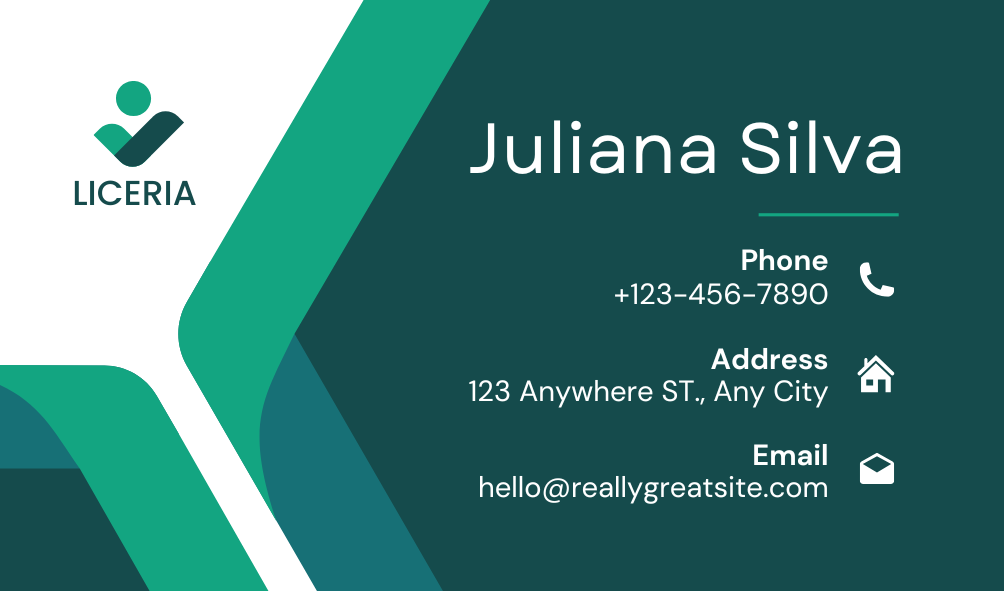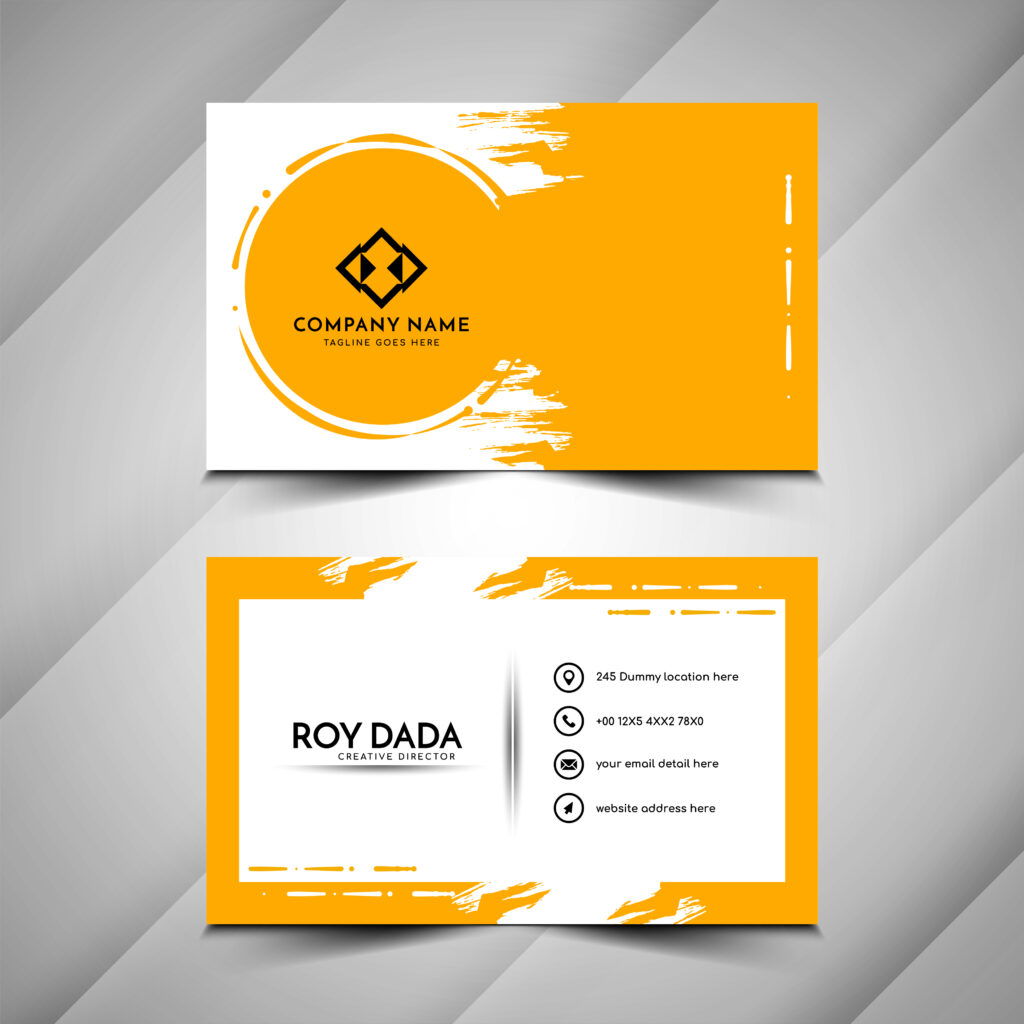A business card needs to ensure it depicts outstanding features in a very competitive environment. While the design elements are color and finish, determining the correct dimensions of a business card creates a balance in consistency, compatibility, and visual appeal. With the right dimensions, businesses would have the opportunity to design cards that would perfectly fit wallets, cardholders, and lanyards, meeting both practical and aesthetic needs. Below, we review some standard dimensions of business cards, variations in their design, such as gold foil and metal, and discuss a few budget options available to start-up companies.
Understanding Standard Business Card Dimensions
The typical dimensions for a business card, for most professional uses in the United States and Canada, are 3.5 x 2 inches (88.9 x 50.8 mm). This size easily fits into wallets and cardholders, making this size a standard across many industries.
This size is slightly different in Europe, at 3.3 x 2.1 inches or 85 x 55 mm, much like a credit card. This size difference allows for slight regional adaptation while still making it possible to fit the cards in most holders and storage options. However, companies first need to check norms in the target regions in terms of dimensions before design and printing of business cards in order to avoid awkward fits.
The Impact of Bleed and Safe Area on Business Card Dimensions
Besides the main dimensions, it’s important to understand “bleed” and “safe area.” Bleed is an area outside the edges of the finished card; usually, 0.125 inches on each side, or 3 mm, just in case the item is cut off and may not be perfectly aligned, so no part of the card is unprinted. This brings the total dimensions on a 3.5 x 2-inch business card up to 3.75 x 2.25 inches (95.25 x 57.15 mm).
The safe area is the inner part of the card where all the vital details, such as the name, logo, and contact, are placed for it not to get cut off when trimming is being done. This is usually, for most cards, 0.125 inches inwards from each edge.
Custom Business Card Dimensions for Impact
Still, other professionals prefer to use unusual dimensions in order to make their cards stand out. Examples are square business cards that are usually 2.5 x 2.5 inches in size, enabling the card to assume a different shape from its usual rectangular shape. There are also “mini” cards, generally 3 x 1 inch, that offer a compact yet memorable design. Still, before that, it would be necessary to consider advantages and disadvantages with regard to custom dimensions: to be sure, unique dimensions capture attention, but they are not fitted to the standard cardholders or wallets, hence less practical probably.
Gold Foil Business Cards: Adding Luxurious Appeal
Sophistication on a business card can be added by adding gold foil. This involves stamping gold foil onto parts of the card, such as the logo, name, or borders, creating a shiny and catching effect. Gold foil cards look impressive and suggest a high-end image; hence, they are mainly applied by luxury brands and businesses that consider premium brand identity important.
When designing business cards that feature gold foil, placement becomes critical. It typically requires one additional layer in design preparation to ensure the foil perfectly matches up with the print it overlays. As far as dimensions are concerned, gold foil cards tend to adopt more traditional size cuts of 3.5 x 2 inches because the process is considered somewhat tricky to produce, hence making quality and cost regulation of foil applications easier.
Durability and Prestige with Metal Business Cards
Metal business cards provide a great alternative for those who want to leave an indelible mark. In fact, these business cards, made from steel, aluminum, or other metals, possess a distinctive weight that suggests solidity and prestige. Although metal business cards can be customized for various sizes, most professionals still want to stay as near as possible to the standard 3.5 x 2-inch size so cardholders can accommodate them.
Many metal cards are made with laser-etched designs that can be really intricate without running a smudging or fading risk. While these cards are more expensive to make, they offer a high-impact look and feel that’s just right for industries where the brand identity includes elements of luxury and strength.
For businesses considering metal cards, they need to consider their weight and thickness. Most business card stock ranges in thickness from 14 to 20 pt, but most metal cards are considerably thicker. They demand special storage considerations and are generally excluded from everyday card holders. In most applications, their distinction justifies the extra attention needed.
Affordable Business Card Solutions for Growing Businesses
For startups and small businesses, the balance lies in trying to be within the budget while seeking quality. Fortunately, inexpensive business cards have come a long way, and quite a few really attractive options are available at very minimal costs without compromising professionalism. Online printing companies leverage bulk discounts, subscription services, and customization for different price options, meaning producing quality cards will not break the bank.
Common base materials available for business cards include, but are not limited to, cardstock in a variety of finishes: matte, gloss, and satin. These can take a bare-bones design to the next level without added cost, letting businesses make a lasting impression on a dime. Most providers will have budget-friendly ways of incorporating branding elements like corporate fonts, color schemes, and even lightweight embellishments into the card, affording an organization the flexibility it needs to create a memorable card on a budget.
Choosing the Right Dimensions for Affordable Business Cards

While cheap business cards will usually only use the 3.5 x 2-inch standard due to simplicity and low cost, some outsourced vendors will offer size upgrades or alternatives with marginal additional cost. Sometimes, without substantially raising prices, especially in bulk orders, upgrading to or using a square or mini business card may be done. This would give small businesses that want to appear different without added expense a different look and feel without having production costs go through the roof.
The second area where the digital templates come in useful is that they cut down on design time and, therefore, cost when it comes to more affordable business cards. Most print providers have templates that will walk users through the proper setup of dimension, bleed, and safe area to make sure even budget-friendly options end up professional.
What Dimensions Are Best for Your Brand?
Ultimately, the optimum dimensions for a business card will depend on branding goals and functionality needs. Standard 3.5 x 2-inch cards remain perfect for general business purposes, since they balance compatibility with design flexibility. However, when the image of a company carries a good deal of creativity, high-end luxury, or bold branding, size variations, materials, and more, like gold foil and metal business cards, are ways to visually communicate those qualities.
If the brand wants something more workable, then ordinary-sized cards at affordable prices still do a great deal. Embossed logos, rich colors, and clean designs raise the basic business card to the next level with its rememberability, all while balancing quality with affordability.
Incorporating Business Cards into a Broader Marketing Strategy
Business cards remain a touchstone of any greater marketing strategy. With their portability and direct nature, they offer a very unique channel toward making connections. For businesses operating in Demand Food Delivery Services or other service-driven industries, cards with eye-catching designs and clear, readable contact information provide a quick, no-nonsense way to reach clients.
Many designs now include a QR code linked to digital portfolios, websites, or even a personal landing page that makes navigation easy for clients desiring to learn more about the services. Use materials that reflect brand values to further enhance a business card’s impact and alignment with the company’s wider image.



